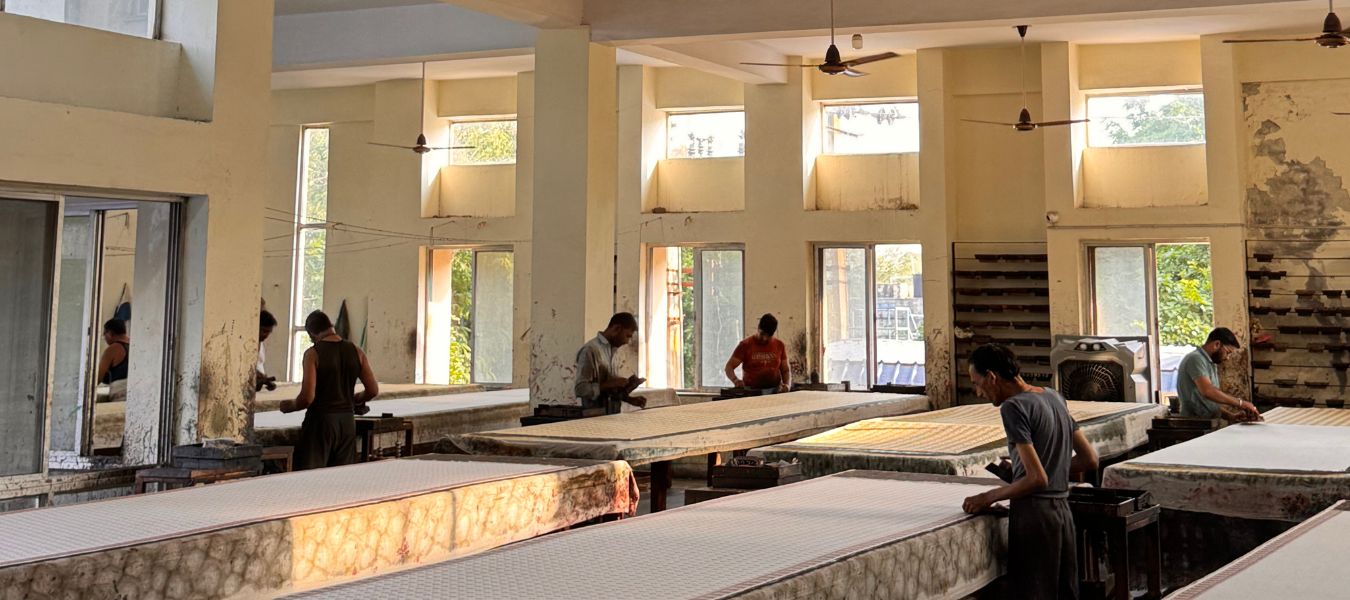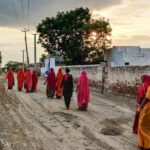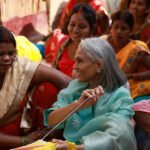They say some stories are written in ink, but, with Bagru, they are etched in water, dye and beauty of hand-carved wooden blocks.
Beyond the Hawa Mahal and City Palace of Jaipur lies a small village by the name of Bagru- the kind you might easily miss while driving on the highway, and the kind whose name sounds vaguely familiar because you have heard it mentioned in almost every fabric shop you ever walked into.
But Bagru isn’t just a dot on the map, it is a centuries-old craft kept alive by the Chippa community. It is an indigenous style of printing using natural dyes on hand-carved wooden blocks. It is famous for using a deep red colour outline called ‘Begar’ and a black colour called ‘Syahi’. The earthy, vibrant patterns and motifs reflect deep cultural roots and mostly a juxtaposition of geometrical shapes, bird, animal and floral forms that create beautiful and elegant designs.
A timeless tradition woven by the Chippas
The Chippas have been practising fabric printing here for more than 400 years. More than just a printing technique, Bagru is a way of life for them – a sustainable art form that supports livelihoods and preserves a rich heritage.
The name ‘Chippa’ originates from the Hindi word ‘Chhapa’ or ‘Chhapna’, which means ‘to print’ or ‘to stamp’. True to the roots of their origin, the community has been instrumental in keeping the tradition of Bagru printing alive and spreading it across the borders of Rajasthan.
Intricacies of printing
The beauty of Bagru lies in the intricate process of printing, dyeing and final touches. Each step requires precision, expertise and labour that is invested in the creation of a textile that tells a story of tradition.
The process begins with preparation of the fabric that is soaked in water and turmeric to give it a yellowish tint. This pre-treatment helps the fabric absorb dyes better. Once dried, delicate motifs are printed on the fabric using wooden blocks made from teak or shessham wood. Natural dyes such as indigo for blue, madder root for red and pomegranate rind for yellow are used to get the desired print and colour pattern. Once the printing is complete, the fabric is left to shade dry in strong sun that helps enhance the colour and vibrancy. The final wash helps bring out the earthy and rich texture to life, ready to be transformed into garments, artworks and furnishings that reflect timeless art.
Today, Bagru print is not just a mark of tradition, but a symbol of conscious living and community culture. Designers and consumers across the world are rediscovering the value of handcrafted textile like Bagru, taking it to international runways and adding it to boutique collections. Yet, at its heart, it remains rooted in the roads of Bagru, where generations of families carry on the proud tradition of printing, dyeing and telling stories.




